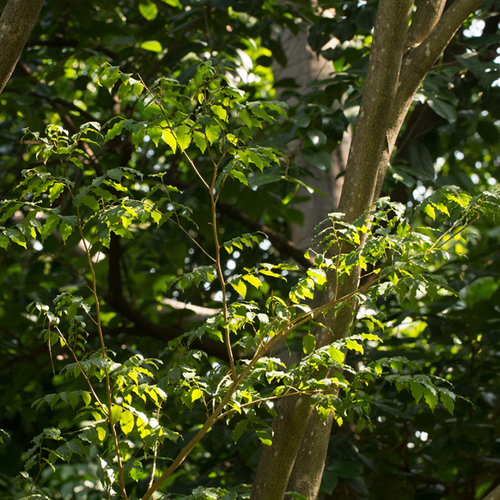
Copaiba balsam
Scientific names: Copaifera officinalis, Copaifera langsdorffii, Copaifera reticulata, Copaifera duckei
Family: Fabaceae/Leguminosae
Alternate names: Balsam, Bálsamo de Copaiba, Baume de Copahu, Copaiba, Copaiba Oil, Copaiba Oleoresin, Copaïer, Copaiva, Copayer, Jesuit's Balsam, Oléorésine de Copahu
Background
Copaiba balsam is a sap-like substance (oleoresin) that's collected from the trunk of Copaifera trees. It is processed to make copaiba oil.
Chemicals in copaiba balsam and copaiba oil might help kill germs. Other chemicals in copaiba balsam might decrease swelling.
People use copaiba balsam for dental cavities, osteoarthritis, rheumatoid arthritis, UTIs, wound healing, and many other conditions, but there is no good scientific evidence to support these uses.
Don't confuse Copaiba balsam with other balsams, including Peru balsam, Tolu balsam, Canada balsam, and Oregon Fir balsam. These are not the same.
Chemicals in copaiba balsam and copaiba oil might help kill germs. Other chemicals in copaiba balsam might decrease swelling.
People use copaiba balsam for dental cavities, osteoarthritis, rheumatoid arthritis, UTIs, wound healing, and many other conditions, but there is no good scientific evidence to support these uses.
Don't confuse Copaiba balsam with other balsams, including Peru balsam, Tolu balsam, Canada balsam, and Oregon Fir balsam. These are not the same.
Safety Safety definitions
When taken by mouth: Copaiba balsam is commonly consumed in foods. But it is possibly unsafe when used as a medicine. Copaiba balsam can cause side effects such as stomach pains, vomiting, and diarrhea.
When applied to the skin: Copaiba balsam is possibly safe. It can cause redness, itching, and a rash for some people.
When applied to the skin: Copaiba balsam is possibly safe. It can cause redness, itching, and a rash for some people.
Special Precautions & Warnings:
Pregnancy and breast-feeding: Copaiba balsam is possibly unsafe when taken by mouth as a medicine. Stay on the safe side and avoid use.Effectiveness
Effective Effectiveness definitions
There is interest in using copaiba balsam for a number of purposes, but there isn't enough reliable information to say whether it might be helpful.
Dosing & administration
There isn't enough reliable information to know what an appropriate dose of copaiba balsam might be. Keep in mind that natural products are not always necessarily safe and dosages can be important. Be sure to follow relevant directions on product labels and consult a healthcare professional before using.
Interactions with pharmaceuticals
It is not known if Copaiba Balsam interacts with any medicines. Before taking Copaiba Balsam, talk with your healthcare professional if you take any medications.
Interactions with herbs & supplements
There are no known interactions with herbs and supplements.
Interactions with foods
There are no known interactions with foods.
vital.ly has licensed monographs from TRC Healthcare.
This monograph was last reviewed on 29/12/2022 18:35:37 and last updated on 31/03/2022 11:00:12. Monographs are reviewed and/or updated multiple times per month and at least once per year.
Natural Medicines disclaims any responsibility related to medical consequences of using any medical product. Effort is made to ensure that the information contained in this monograph is accurate at the time it was published. Consumers and medical professionals who consult this monograph are cautioned that any medical or product related decision is the sole responsibility of the consumer and/or the health care professional. A legal License Agreement sets limitations on downloading, storing, or printing content from this Database. No reproduction of this monograph or any content from this Database is permitted without written permission from the publisher. It is unlawful to download, store, or distribute content from this site.




